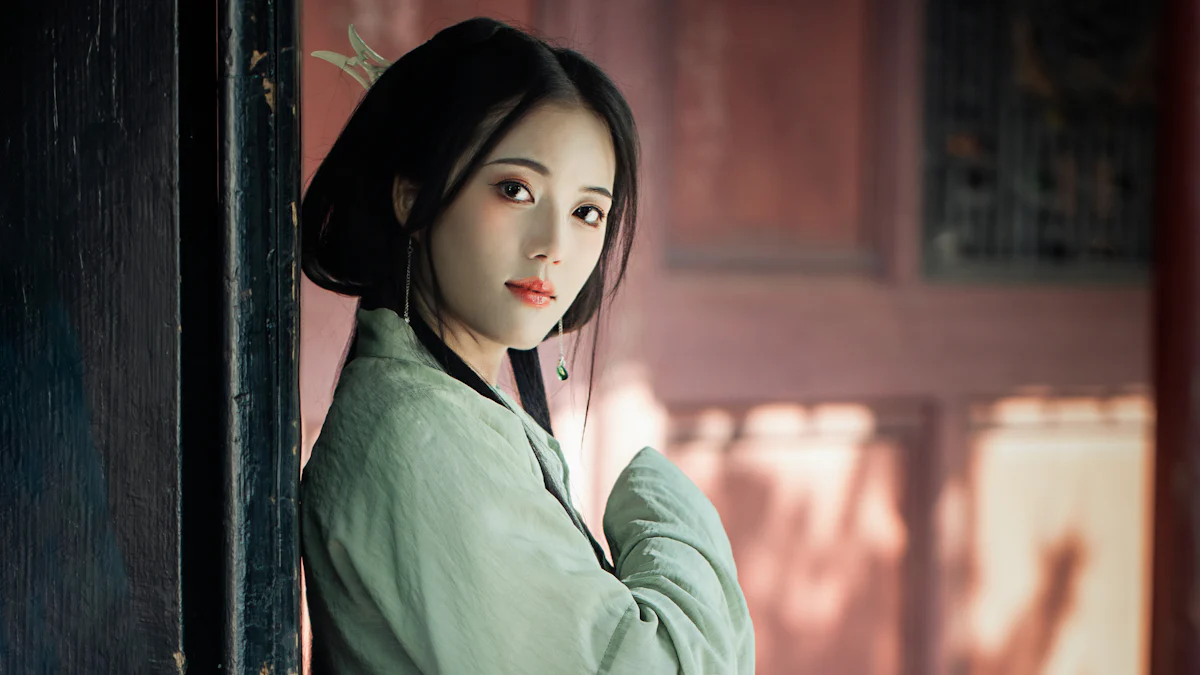 The Chinese traditional dress cheongsam holds a significant place in Asian culture, embodying elegance and tradition. Its history is a captivating tale of fashion evolution, inspiring international designers. From its origins in the Qing Dynasty to its modern adaptations, the cheongsam has symbolized femininity and Chinese heritage for centuries. This blog aims to debunk common myths surrounding the cheongsam, shedding light on its cultural importance and dispelling misconceptions about its exclusivity. Join us on a journey to unravel the timeless charm of the cheongsam.
The Chinese traditional dress cheongsam holds a significant place in Asian culture, embodying elegance and tradition. Its history is a captivating tale of fashion evolution, inspiring international designers. From its origins in the Qing Dynasty to its modern adaptations, the cheongsam has symbolized femininity and Chinese heritage for centuries. This blog aims to debunk common myths surrounding the cheongsam, shedding light on its cultural importance and dispelling misconceptions about its exclusivity. Join us on a journey to unravel the timeless charm of the cheongsam.
Myth 1: Cheongsam is Only for Special Occasions
Everyday Wear
Historical Context
In the 1950s, Cheongsam gained popularity in Hong Kong as it transitioned into everyday wear. The designs evolved to be more westernized and sensual, reflecting a blend of traditional Chinese elements with modern influences.
Modern Usage
During the 1960s, Cheongsam continued its reign as everyday attire in Hong Kong. The dress became more flattering and tight-fitting, following the trend set in the previous decade. This shift highlighted a fusion of cultural styles that appealed to a broader audience.
Versatility of Cheongsam
Different Styles
Originating from Shanghai in the 1920s, Cheongsam showcased various styles that captivated fashion enthusiasts worldwide. Its adaptability allowed for different interpretations, making it a versatile choice for diverse occasions.
Adaptations Over Time
The evolution of Cheongsam in Hong Kong and Taiwan during the 1950s saw a more westernized approach with a corset-like cut. This style was favored not only locally but also by the Western fashion world, solidifying its position as a global fashion icon.
Myth 2: Cheongsam is a Modern Invention
Historical Origins
Early Forms
The cheongsam has a rich history that dates back to the Qing Dynasty, showcasing its evolution from traditional Chinese attire to a symbol of elegance and femininity. Its early forms were characterized by intricate embroidery and silk fabrics, reflecting the cultural values of modesty and sophistication.
Evolution Over Centuries
Throughout the centuries, the cheongsam has adapted to changing fashion trends and societal norms, solidifying its position as a timeless garment. From its origins in Shanghai to its modern interpretations, the dress has undergone various transformations while retaining its essence of grace and tradition.
Cultural Significance
Symbol of Elegance
The cheongsam stands as a testament to Chinese craftsmanship and design, embodying elegance and grace in every stitch. Its form-fitting silhouette accentuates the beauty of the wearer, symbolizing not just fashion but also cultural pride and sophistication.
Role in Women’s Liberation
Beyond its aesthetic appeal, the cheongsam played a pivotal role in the liberation of Chinese women from traditional constraints. By embracing modern influences and redefining femininity, the dress became a symbol of empowerment and freedom for women across generations.
Myth 3: Cheongsam is Only for Chinese Women
Global Influence
Adoption in Western Fashion
The cheongsam has transcended borders and found a place in Western fashion, captivating designers and enthusiasts alike. Its unique blend of traditional Chinese elements with modern trends has made it a sought-after garment on international runways.
Cultural Appreciation vs. Appropriation
The debate surrounding the cheongsam extends to discussions on cultural appreciation versus appropriation. It is crucial to understand the historical and cultural significance of the dress when incorporating it into Western fashion, ensuring that it is done respectfully and with an appreciation for its roots.
Wearing Cheongsam Respectfully
Understanding Significance
To wear the cheongsam respectfully, one must delve into its rich history and symbolism. Understanding the craftsmanship, design intricacies, and cultural connotations of the dress allows individuals to honor its heritage authentically.
Celebrating Heritage
By donning the cheongsam with reverence, individuals have the opportunity to celebrate not just a piece of clothing but also a profound cultural heritage. Each stitch tells a story of tradition, elegance, and resilience, making it a meaningful attire worth cherishing.
- To appreciate the Cheongsam fully, one must debunk the myths surrounding it.
- Cultural sensitivity plays a pivotal role in understanding and embracing its significance.
- By listening to diverse perspectives and engaging in respectful dialogues, individuals can foster a deeper appreciation for Chinese culture and fashion.
- Openness to learning and acknowledging different viewpoints is essential in promoting cultural understanding and harmony.
- Through education and awareness, we can celebrate the beauty of the Cheongsam while honoring its rich heritage.






